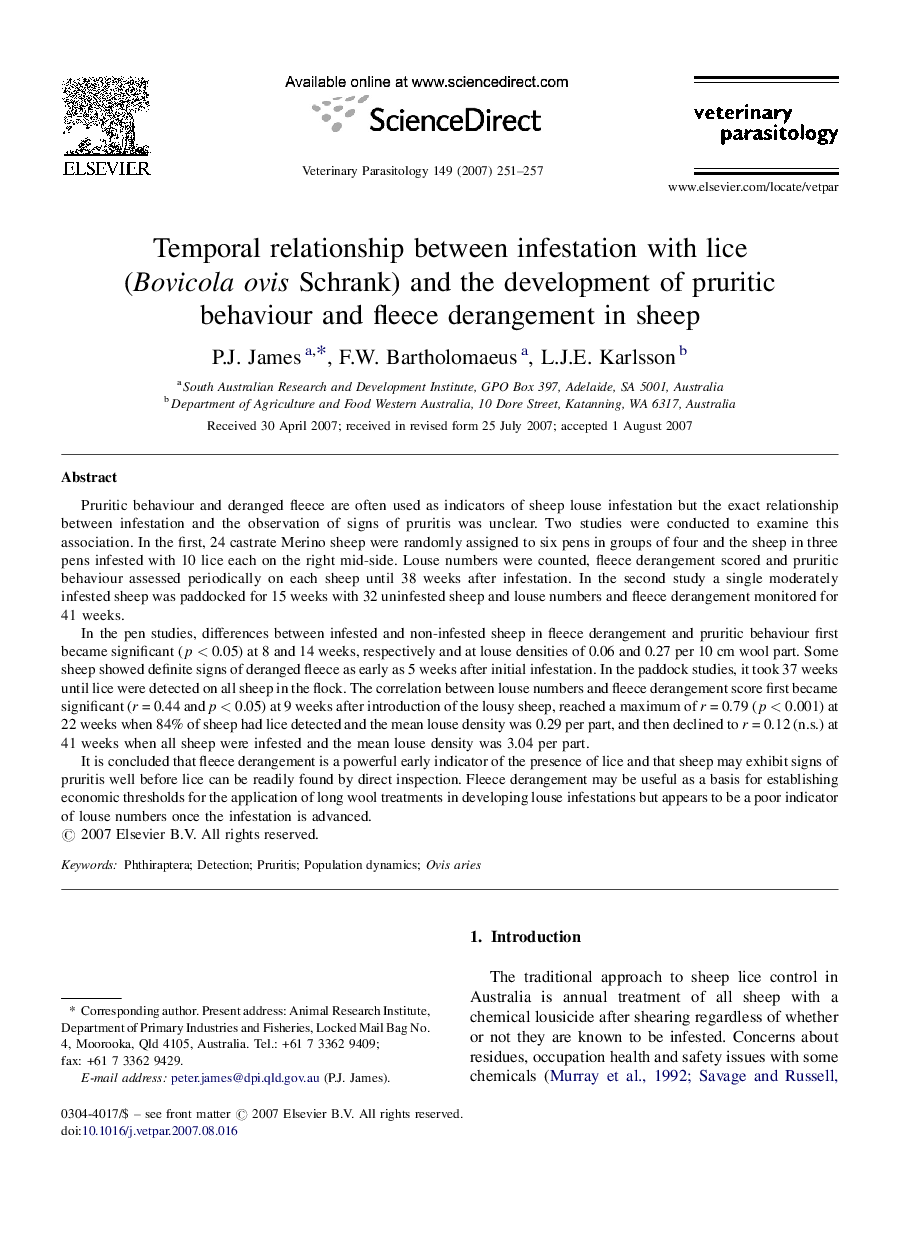| کد مقاله | کد نشریه | سال انتشار | مقاله انگلیسی | نسخه تمام متن |
|---|---|---|---|---|
| 2471901 | 1555776 | 2007 | 7 صفحه PDF | دانلود رایگان |

Pruritic behaviour and deranged fleece are often used as indicators of sheep louse infestation but the exact relationship between infestation and the observation of signs of pruritis was unclear. Two studies were conducted to examine this association. In the first, 24 castrate Merino sheep were randomly assigned to six pens in groups of four and the sheep in three pens infested with 10 lice each on the right mid-side. Louse numbers were counted, fleece derangement scored and pruritic behaviour assessed periodically on each sheep until 38 weeks after infestation. In the second study a single moderately infested sheep was paddocked for 15 weeks with 32 uninfested sheep and louse numbers and fleece derangement monitored for 41 weeks.In the pen studies, differences between infested and non-infested sheep in fleece derangement and pruritic behaviour first became significant (p < 0.05) at 8 and 14 weeks, respectively and at louse densities of 0.06 and 0.27 per 10 cm wool part. Some sheep showed definite signs of deranged fleece as early as 5 weeks after initial infestation. In the paddock studies, it took 37 weeks until lice were detected on all sheep in the flock. The correlation between louse numbers and fleece derangement score first became significant (r = 0.44 and p < 0.05) at 9 weeks after introduction of the lousy sheep, reached a maximum of r = 0.79 (p < 0.001) at 22 weeks when 84% of sheep had lice detected and the mean louse density was 0.29 per part, and then declined to r = 0.12 (n.s.) at 41 weeks when all sheep were infested and the mean louse density was 3.04 per part.It is concluded that fleece derangement is a powerful early indicator of the presence of lice and that sheep may exhibit signs of pruritis well before lice can be readily found by direct inspection. Fleece derangement may be useful as a basis for establishing economic thresholds for the application of long wool treatments in developing louse infestations but appears to be a poor indicator of louse numbers once the infestation is advanced.
Journal: Veterinary Parasitology - Volume 149, Issues 3–4, 10 November 2007, Pages 251–257